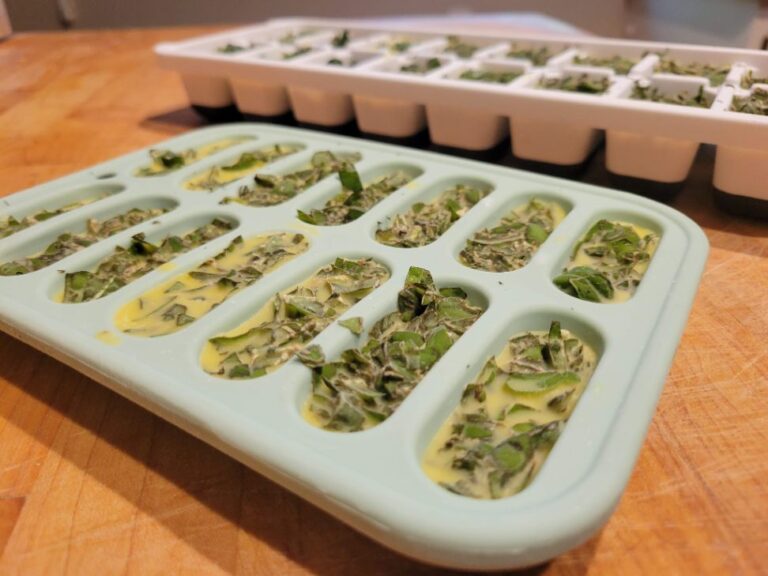This post may contain affiliate links which means I may receive a commission for purchases made through links. I only recommend products that I have personally used. As an Amazon Associate I earn from qualifying purchases. Learn more on my Private Policy page.
Fresh herbs can be elusive when you need them the most. Frozen herb cubes can offer a perfect solution for year-round fresh herb flavor in your cooking. Let’s dive into how we can freeze herbs in ice cube trays to preserve their essence long after the growing season has ended.
Table of Contents
To get started creating frozen herb cubes for your culinary dishes, let’s jump in by following these steps:
1) Harvest Fresh Healthy Herbs
The first thing to consider when making frozen herb cubes is herb preparation. The quality of your herbs is one of the most important factors in how your herb cubes will turn out, so make sure you’re using fresh, healthy herbs.
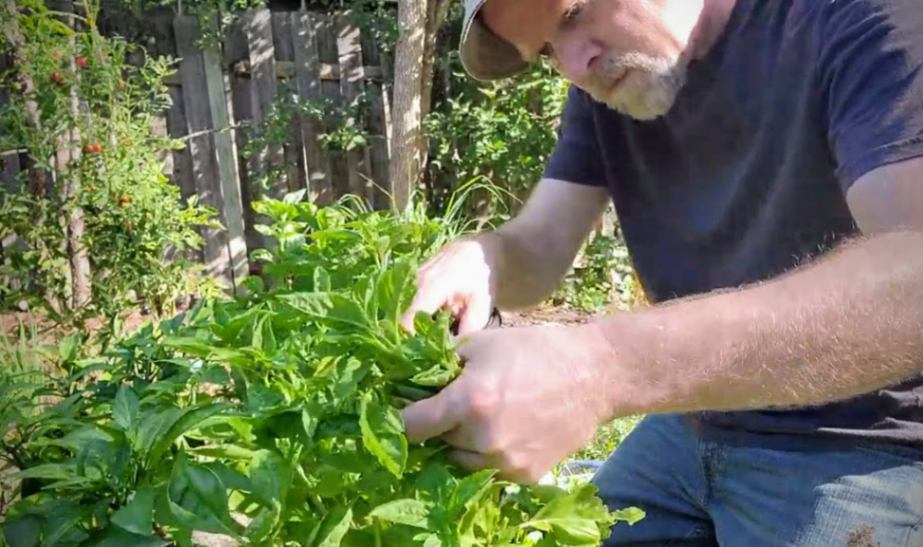
It helps to harvest herbs when they are at their peak in terms of both flavor and aroma. Consider giving your herbs a good soaking the day before harvesting to ensure they are well-hydrated at harvest time. For more tips and garden hacks on harvesting specific herbs, check out my herb harvesting & preservation guides here.
What are the best herbs to freeze?
While almost any type of culinary herbs can be frozen using ice cube trays, some herbs lend themself to this process better than others. Delicate herbs like basil, parsley, and cilantro can benefit the most from freezing in ice cube trays. Read my article about the 6 best herbs to freeze for more on this.
2) Wash and Dry Herbs in Preparation for Freezing
Rinse off your herbs with cold water to remove any dirt, debris, or insects. If you see any damaged or diseased leaves while washing, go ahead and get rid of them.
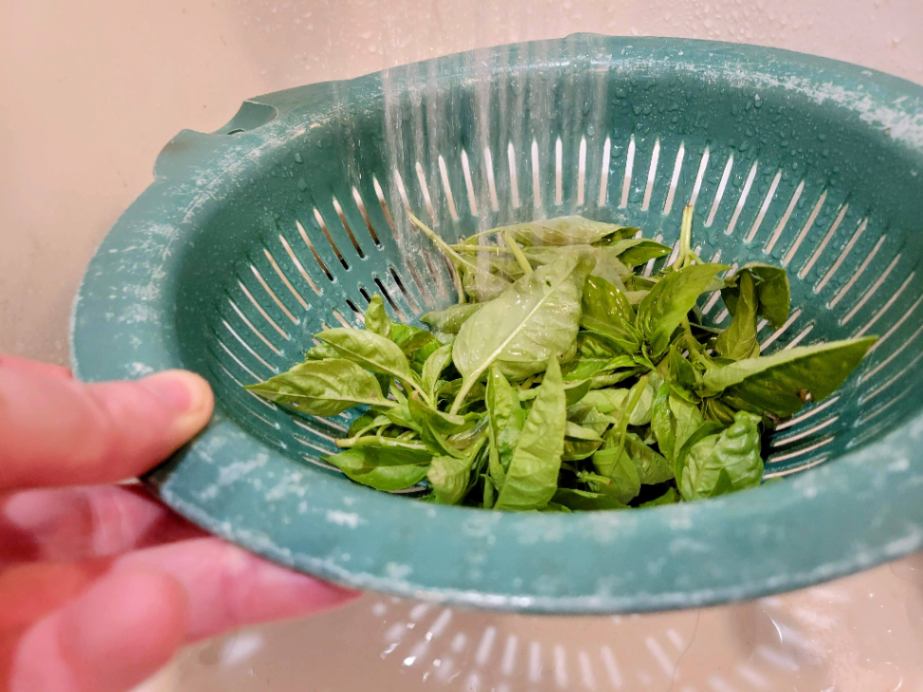
Next, lay your herbs out on paper towels and pat them dry. If you’re planning to freeze your herbs in oil, make sure to let them thoroughly dry out after washing them. If moisture is present during freezing, it can create ice crystals, which can lead to mushy herbs with a watery consistency after thawing.
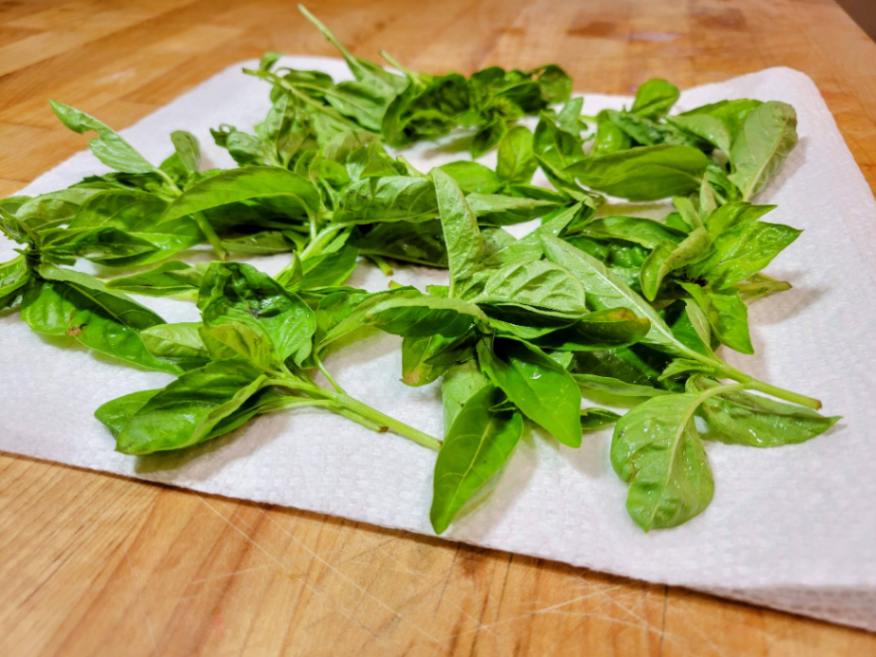
Drying your herbs is obviously less critical if you’re planning to freeze them in water. In fact, if you do plan to freeze them in water, just go ahead and skip the drying step altogether.
3) Chop Herbs to Preferred Cooking Size (or Blend Them)
Once your herbs are completely dry, remove the leaves from the stems, discarding any diseased or damaged leaves you encounter. Next, you’ll want to chop up your herbs down to the size you’d prefer them to be when you end up cooking with them.
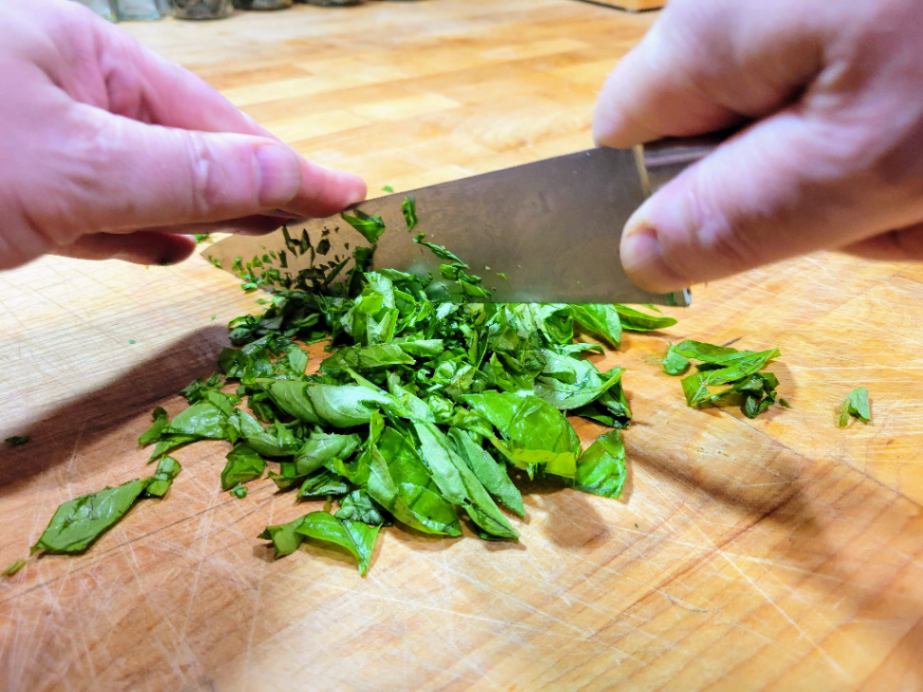
Alternatively, you could blend your herbs in a food processor if you’d like them to be more of a paste consistency. I typically find that just chopping my herbs up pretty finely will meet most of my cooking needs, but do what works best for your own culinary dishes.
4) Fill Ice Cube Molds 2/3 Full with Herbs
Next, fill your ice cube trays with your chopped-up or blended herbs. Don’t fill the individual molds up all the way, though. Leave some space in the molds so you don’t have to top them off completely with liquid to cover the herbs. I suggest filling the molds up with herbs to about 2/3 from the top.
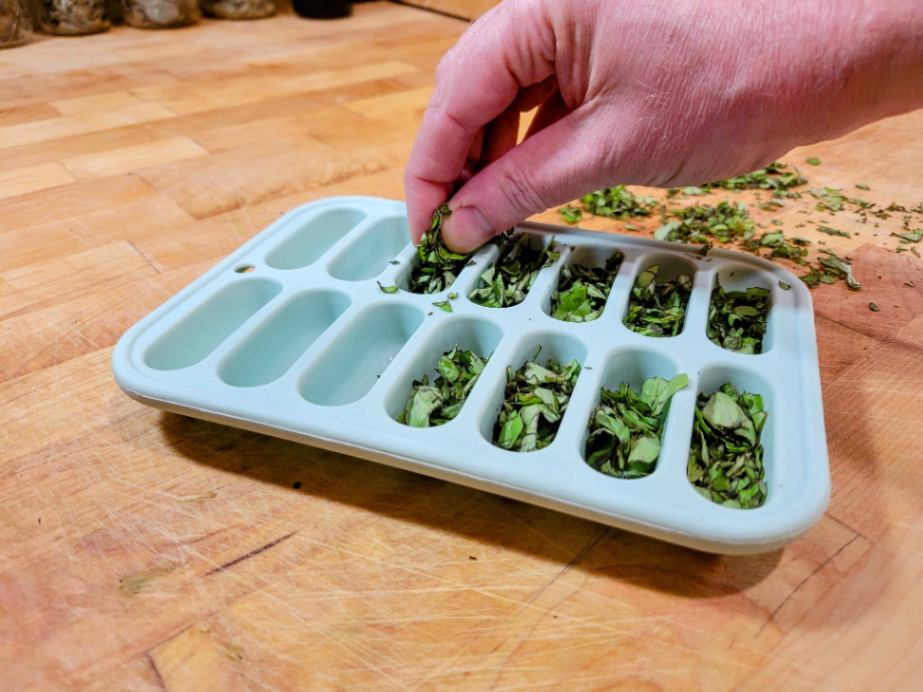
I strongly suggest you use silicon ice cube trays for your herb cubes, particularly if you’re freezing them in oil. Frozen herb cubes are far easier to remove from silicon trays than from traditional plastic ice cube trays. There are all kinds of silicon herb trays available on Amazon.
5) Pour Oil or Water into Trays Submerging Herbs
Now that you have your herbs packed into your ice cube trays, it’s time to pour liquid in to cover them. Make sure that the herbs are submerged before you put the ice cube trays in the freezer.
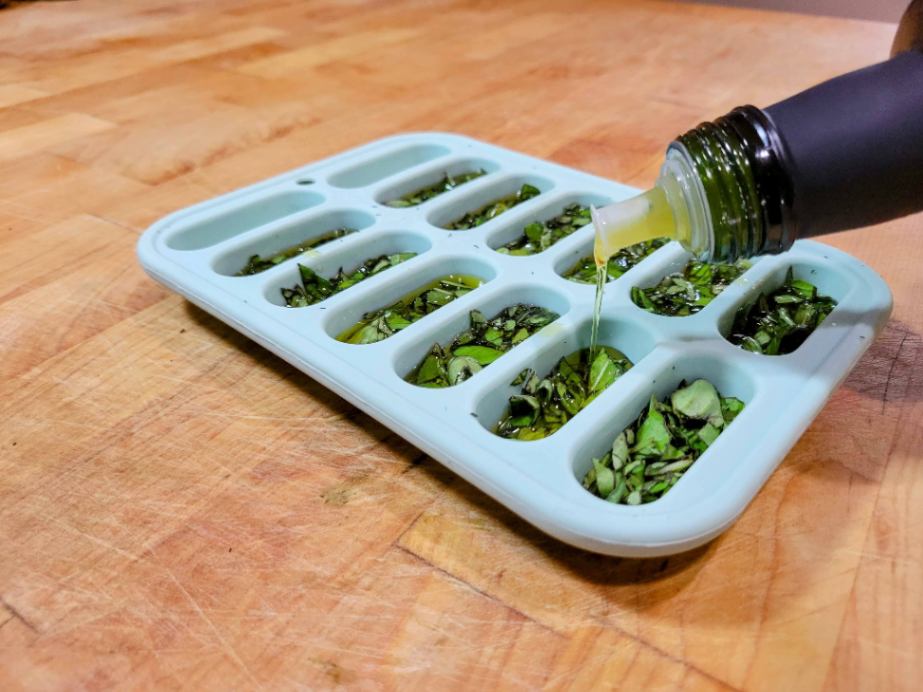
Is it better to freeze herbs in oil or water?
When it comes to preserving herbs by freezing them in ice cubes, the primary options are to use either oil or water. But which one is the superior choice?
Generally speaking, freezing herbs in olive oil is more advantageous than freezing herbs in water in ice cube trays. Herbs frozen in oil maintain their texture and flavor better than herbs frozen in water. Oil-based herb cubes also have a longer shelf-life and tend to be more convenient for cooking.
That said, there are some occasions when water-based herb cubes are preferable, such as in recipes where you wouldn’t want to introduce any oil. Water-based mint ice cubes can make an excellent last-minute addition to certain cocktails.
Comparison of Freezing Methods: Oil vs. Water Ice Cubes
| Freezing in Oil | Freezing in Water | |
|---|---|---|
| Texture | Retains herb texture | May result in mushiness |
| Flavor & Aroma | Preserves strong flavor and aroma | May dilute herb flavor |
| Usage | Convenient for oil-based dishes | Suitable for water-based recipes |
| Longevity | Longer shelf life, protection from oxidation | Shorter shelf life, herbs may darken |
While I prefer to freeze herb cubes in olive oil, any other type of oil can be used. Many home cooks will use vegetable oil, canola oil, or avocado oil. Using melted butter poured over your herbs for freezing is another great option that packs a lot of flavor.
6) Freeze Herbs for at Least 4 Hours
Place your herb-filled ice cube tray(s) onto a level surface in your freezer. Let your herb cubes freeze for at least 4 hours or until the cubes are frozen solid.
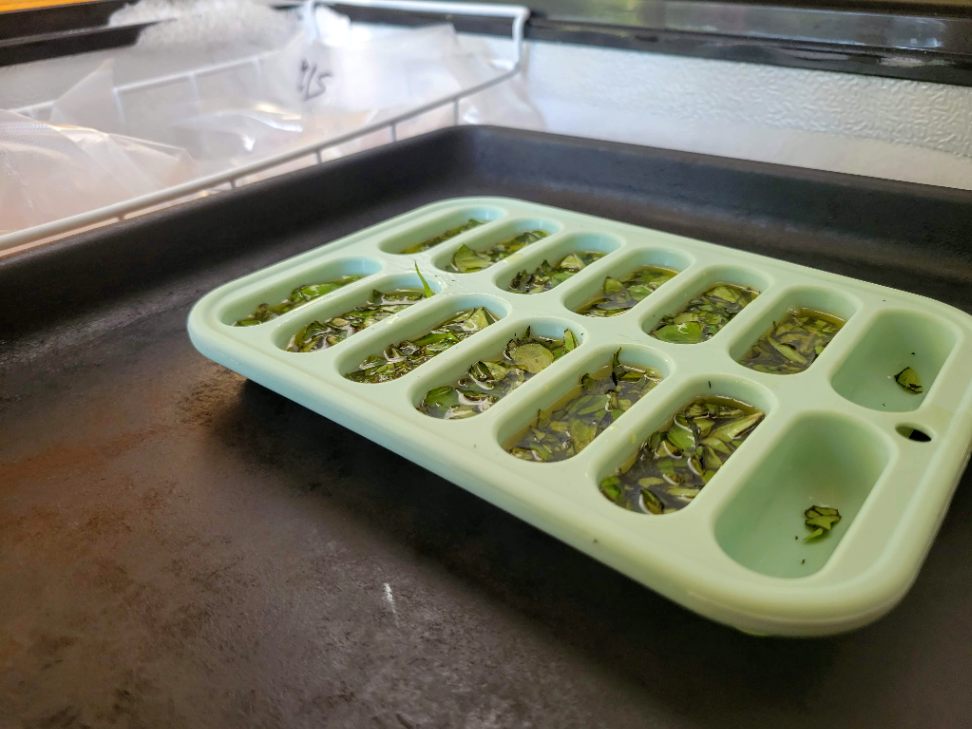
Freezing time will vary depending on factors such as the size of the cubes and your freezer temperature. I typically just let my herb cubes freeze overnight and move on to packing them up for longer-term storage the next day.
7) Remove Frozen Herb Cubes from Ice Trays
Once the herb cubes have frozen solid, get your freezer bags or vacuum sealer set up so you’re able to move through this next part fairly quickly. You don’t want your cubes to start melting during this part of the process.
Next, take your ice cube trays out of the freezer and remove the herb cubes from the ice cube trays.
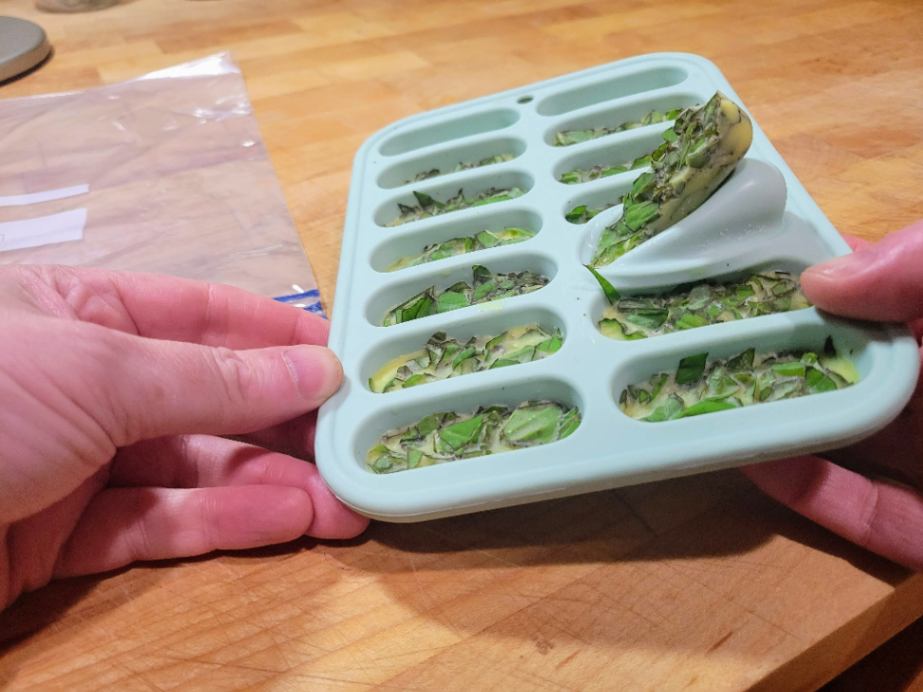
Again, using silicon ice cube trays will make this part of the process go much quicker than if you’re using plastic trays.
8) Store Cubes Tightly in Freezer Bags
Moving fairly quickly, transfer your herb cubes into your freezer bags or into prepared vacuum seal bags. You may want to just toss the cubes right into the bags as you remove them from the ice cube trays. Try to minimize handling as much as possible during this process, as it could cause the cubes to begin to melt.
Remove as much air as possible from your freezer bags before sealing them up for long-term storage.
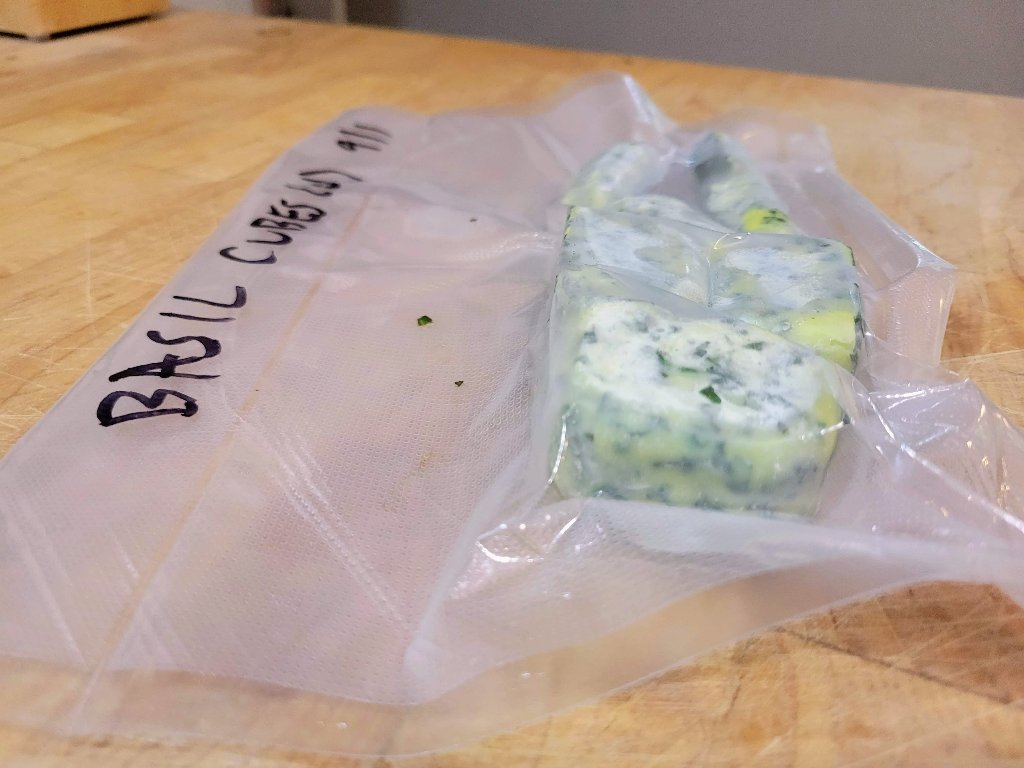
While I rely on my vacuum sealer a lot, it’s not the best solution for storing things you’ll want to use in small quantities fairly regularly, and frozen herb cubes definitely fall into that category. That being said, if I’m freezing a large number of herb cubes, I’ll vacuum-seal everything but one bag that I can access regularly, and rotate the vacuum-sealed herb bags through as I use them up.
Remember to label and date your bags for easy identification.
9) Use Frozen Herb Cubes in Recipes as Needed
Okay, so now you have a bunch of frozen herb cubes, but how can you use them in your day-to-day cooking? Lots of ways, actually. Here are some ideas to get you started.
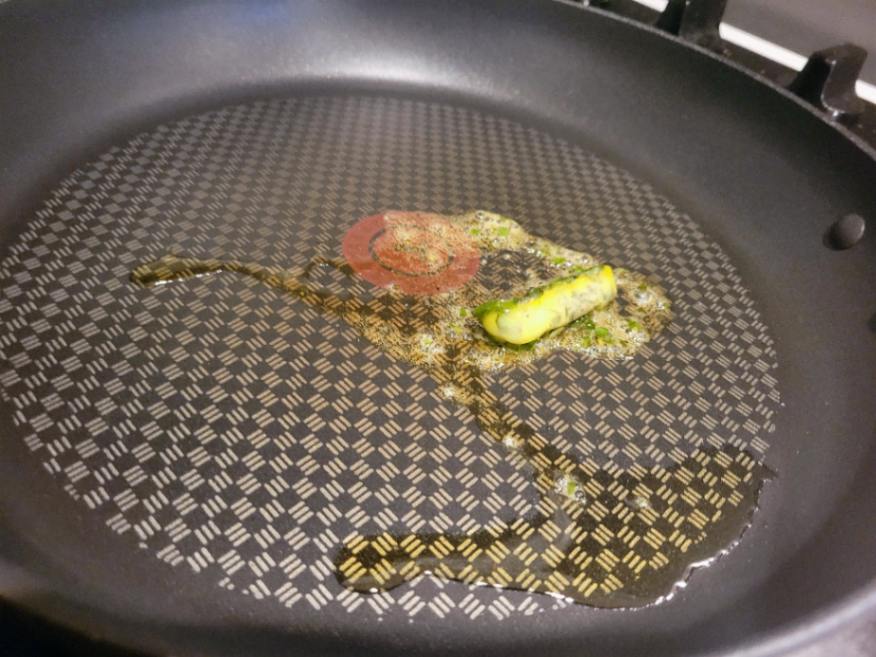
- Sauteed Vegetables: Drop an olive oil herb cube directly into your pan for sautéing onions, bell peppers, mushrooms, or zucchini. The herbs and olive oil will add depth of flavor.
- Soup and Stews: Drop frozen herb cubes into soups or stews to infuse them with fresh herb flavor. This works particularly well in slow-cooked dishes.
- Grilling: Pop an herb cube on top of grilled meats or vegetables just before serving. The heat from the grill will melt the cube and create a flavorful finishing touch.
- Pasta and Rice: Toss an herb cube into freshly cooked pasta or rice for a quick burst of flavor and aroma to elevate your side dishes.
- Salad Dressings: Thaw out an herb cube to use as a base for homemade salad dressings or vinaigrettes.
- Roasted Potatoes: Toss an herb cube or two with potatoes before roasting. The olive oil will help to crisp up the potatoes while the herbs infuse them with flavor.
- Bread Dipping: Serve thawed herb cubes with a dash of balsamic vinegar alongside fresh crusty bread as a dip.
- Pasta Sauces: Drop an herb cube into your simmering pasta sauce for a burst of fresh herb flavor. This works especially well with tomato-based sauces and creamy Alfredo sauces.
Frozen herb cubes could be your kitchen’s best-kept secret for flavor and convenience. From sautéed veggies to hearty soups, frozen herb cubes have the potential to elevate everyday dishes. So embrace this culinary hack and enjoy gourmet touches in every meal.
Last Updated on 13 October 2023 by Bob Lee

